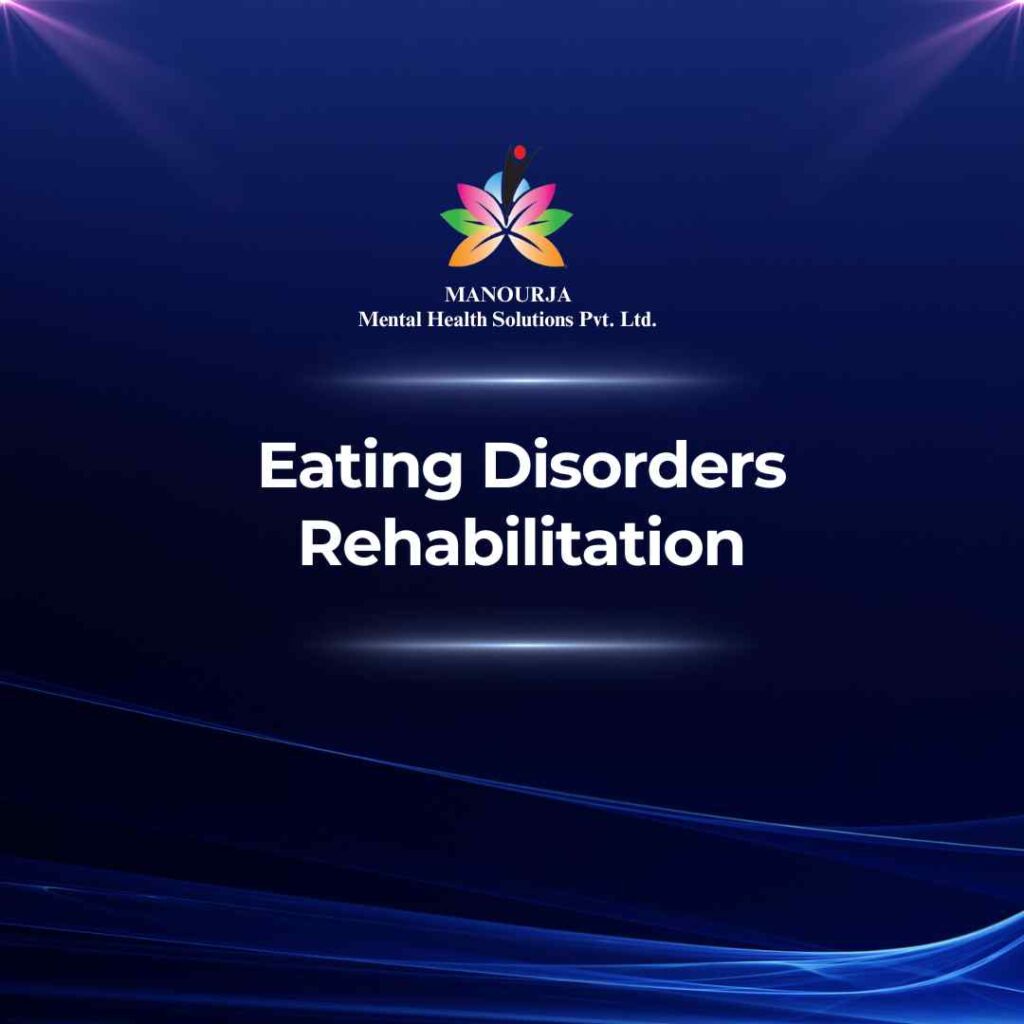Eating Disorders Rehabilitation

Eating disorders are complex conditions that manifest through severe disturbances in eating behaviors and related thoughts and emotions. They are characterized by an obsessive concern with weight, food, and body shape, leading to health-damaging eating habits. These disorders, including anorexia nervosa, bulimia nervosa, and binge-eating disorder, require comprehensive treatment due to their psychological and physiological impacts.
Signs and Symptoms of Eating Disorders
- Anorexia Nervosa: Extreme restriction in food intake, intense fear of gaining weight, and a distorted body image.
- Bulimia Nervosa: Episodes of binge eating followed by behaviors to prevent weight gain, such as self-induced vomiting, excessive exercise, or use of laxatives.
- Binge-Eating Disorder: Regular episodes of eating large quantities of food in short periods, often to the point of discomfort, and feeling a lack of control during these episodes.
Indicators for Outpatient Psychosocial Rehabilitation (OPD)
- Mild to Moderate Symptoms: Those with less severe symptoms who maintain a relatively functional daily life might be suitable for OPD.
- Strong Support System: Individuals with supportive families or friends who can provide emotional and practical support during treatment.
- High Motivation for Recovery: Individuals who are highly motivated to engage in recovery and can adhere to treatment recommendations.
Indicators for Inpatient Psychosocial Rehabilitation (IPD)
- Severe Physical Health Issues: Such as significant malnutrition, electrolyte imbalances, or other medical complications arising from eating disorders.
- Psychiatric Comorbidities: The presence of severe depression, anxiety disorders, or suicidal tendencies that require more intensive supervision and care.
- Ineffective Outpatient Treatment: Lack of progress or worsening symptoms despite participating in outpatient treatment.
Factors Influencing the Decision
- Severity of the Disorder: More severe cases typically require IPD to provide safe and controlled environments for stabilization.
- Physical Health Status: The presence of medical complications that need close monitoring.
- Psychosocial Factors: Availability of a supportive home environment and the patient’s overall mental health stability.
How Psychosocial Rehabilitation Aids in Treating Eating Disorders
Effective treatment involves addressing both the psychological and physical aspects of the disorder, promoting healthy eating behaviors, and resolving the underlying emotional issues.
Techniques and Approaches Utilized at MANOURJA
- Cognitive Behavioral Therapy (CBT): Helps to identify and change distorted perceptions related to body image and unhealthy behaviors.
- Nutritional Counseling: Provides guidance on healthy eating patterns and helps correct nutritional deficiencies.
- Dialectical Behavior Therapy (DBT): Teaches skills for managing stress, regulating emotions, and improving relationships which can influence eating behaviors.
- Family-Based Therapy (FBT): Involves family members in the treatment process to support the patient and address family dynamics that may affect the disorder.
- Group Therapy: Offers support from peers who share similar experiences, providing an environment of understanding and encouragement.
Steps Followed at MANOURJA for Rehabilitation
- Comprehensive Assessment: Initial evaluation to determine the severity of the disorder, nutritional status, and psychological assessment.
- Personalized Treatment Plan: Development of a tailored plan that addresses specific needs, incorporating appropriate therapies.
- Implementation of Treatment: Engaging the patient in various therapeutic interventions based on the treatment plan.
- Monitoring and Adjustments: Regular review of progress and adjustments to the treatment approach as needed.
- Relapse Prevention and Aftercare: Planning and support to maintain recovery after the initial treatment phase, including follow-up appointments and community support resources.
“Step by step, day by day, you are more than your eating disorder.”
